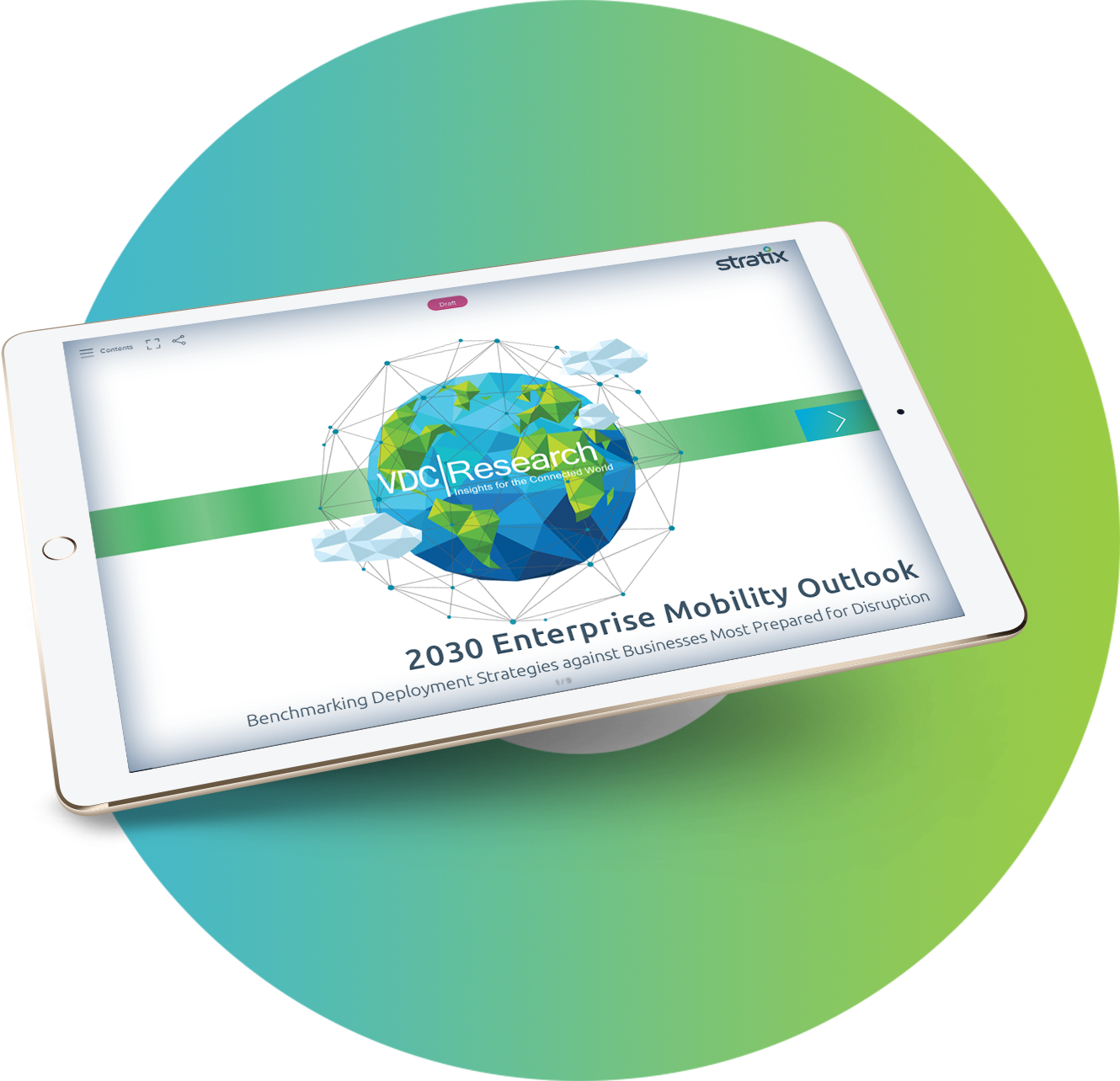How Mobile Tech Adoption Maturity Can Help Companies Prepare for Tech-led Disruption
Written by Elizabeth Klingseisen
3 Min Read
Blog
To the Innovators Go the Spoils
The dizzying pace of technological evolution brings a number of risks for enterprise IT decision makers. Navigating this perilous landscape requires a deft hand, and no area seems to provide more dangerous and paradigm-shifting disruption than mobile technology. The “big bang” of mobile technology – the 2007 launch of the iPhone – transformed an otherwise unremarkable tool into a consumer-led phenomenon that has altered how we live daily life in scarcely over a decade.
From that eruption came a number of vertical-specific digital disruptors. Transportation services like Uber, Lyft and car subscriptions have changed the way millennials view car ownership entirely. Digital disruption was the proverbial meteor that extinguished the physical bookstore from thousands of brick-and-mortar locations from competing chains to a boutique niche that pales in comparison to the electronic publishing industry. Retail has evolved from decades of brick-and-mortar expansion to an omnichannel behemoth wherein customers primarily engage through dedicated apps on their smartphones. Enterprises must constantly be aware of threat of technology-led disruption.
The specter of seemingly stable and dominant players being consigned to the scrapheap of business history looms large over IT leaders and decision makers. To that end, a recent survey from Stratix, a leading managed mobility services provider, and VDC Research, a leading enterprise mobile technology market research authority, interviewed hundreds of enterprise mobility decision makers to establish a useful metric for determining what mobile tech adoption maturity looks like and how it can help companies prepare for tech-led disruption.
This whitepaper established a number of valuable insights:
Innovators Lead in Ways Both Expected and Unexpected
The study classified the participants in four distinct categories based chronologically on their engagement with emerging mobile technology:
- Innovators
- Early Adopters
- Early Majority
- Late Majority and Laggards
They were then evaluated across four key drivers of readiness:
- Current mobile investment optimization strategies
- Decision making priorities
- Operational agility
- Preparedness for future innovation
The “innovators” led the pack in areas you would expect them to, such as being among the first businesses to invest in new technologies with an understanding of the risk-reward factor of doing so. They have the highest rates of full optimization with their actively used tech, with their cybersecurity and cloud infrastructure deployments being the most optimized.
Given the risk in adopting new and unproven technologies – not to mention the financial investment required for doing so properly – you might also expect them to lag in terms of fiscal growth. That wasn’t the case, however. Innovators outpaced all other categories in year-over-year revenue growth at a substantial 11 percent.
How is this possible? They were strategic leaders among all segments, and the lynchpin of their strategies was the use of partnerships to stave off disruption and enhance organizational capabilities – in fact, they were the only segment to feature this in their top three.
Successful Digital Strategy Blueprints
The biggest differentiator between Innovators, Early Adopters and the other segments is where they focus their efforts and capabilities to deploy, optimize and maximize return. To drill down further, we examined their most actively used tech services. Innovators and Early Adopters focus on getting the framework for the support of their technology in place – with Managed Mobility Services (MMS) providers being a priority for 85.2% and 83% of respondents, respectively. Cloud infrastructure and Mobile Frontline weren’t far behind.
The more conservative segments – Early and Late Majority – didn’t indicate these areas as priorities with no more than 66% of these types of respondents prioritizing any of the three.
Making the Most of What you Have
A big factor in tech mobile tech maturity of innovators fueling their growth was their unrelenting focus on technology optimization. Innovators got better usage, ROI and deployment from their technologies – by almost 50% more than any other segment. This is due to the fact that they had a substantial lead in prioritizing the ability of IT teams to support the deployment of said technologies.
Ultimately, Innovators look to build the supporting frameworks for technology adoption, the other classes are focused upon the cost/financial implication and justification of deploying technology. This hesitancy involves more groups in the decision-making process, thereby delaying and diluting the efficacy of the solution. Their focus is centered upon the technology cost rather than overall impact on business growth.
Going forward, we can see a clear trend emerging. The most successful navigation of this twisty, fast-evolving landscape requires a holistic approach to technology deployment. While direct costs will always matter, the innovative leaders are able to leverage strong partnerships, bold decision making and a focus on proper support to quickly get up to speed and grab the biggest benefits from emerging technologies. This smart and agile approach is key to driving both growth and readiness against tech-led disruption. Organizations must be able to reconcile both a narrow focus on immediate impact and a big picture focus on investment in readiness and tech support infrastructure to thrive.

Read the Full 2030 Enterprise Mobility Outlook
Get unique insights into the technologies being used to shape the future success of organizations, and more importantly how those technologies are being deployed. Gain insights into prioritizing, implementing and managing the mobile technologies with the greatest impact for your organization.
Download Research Report













